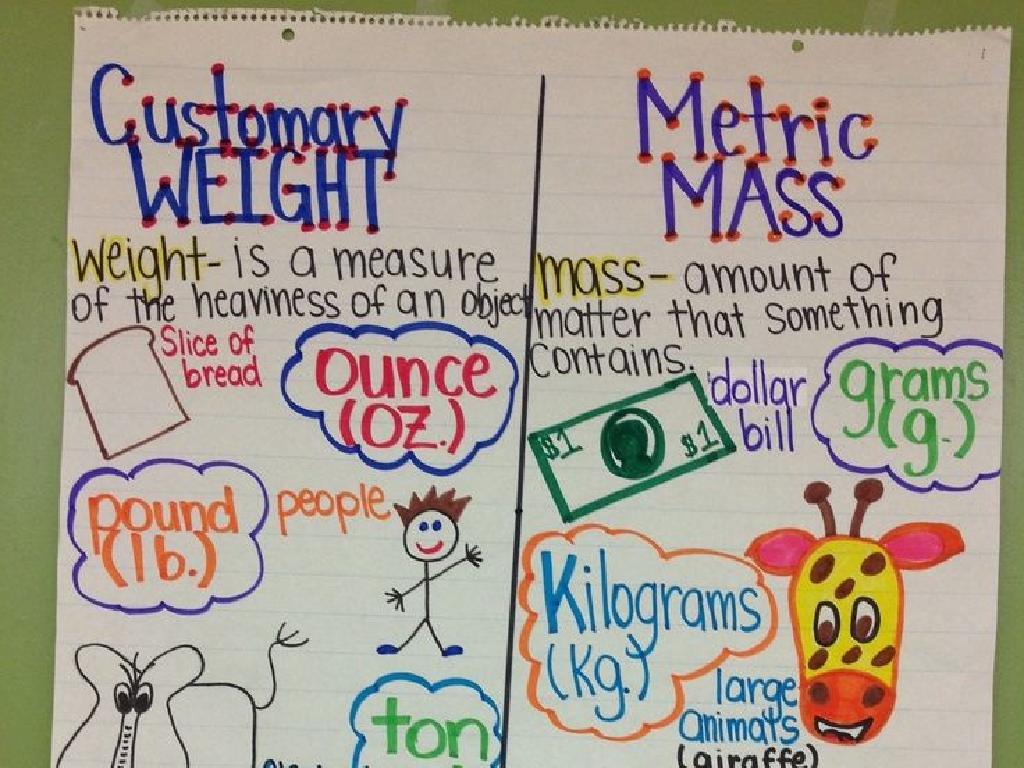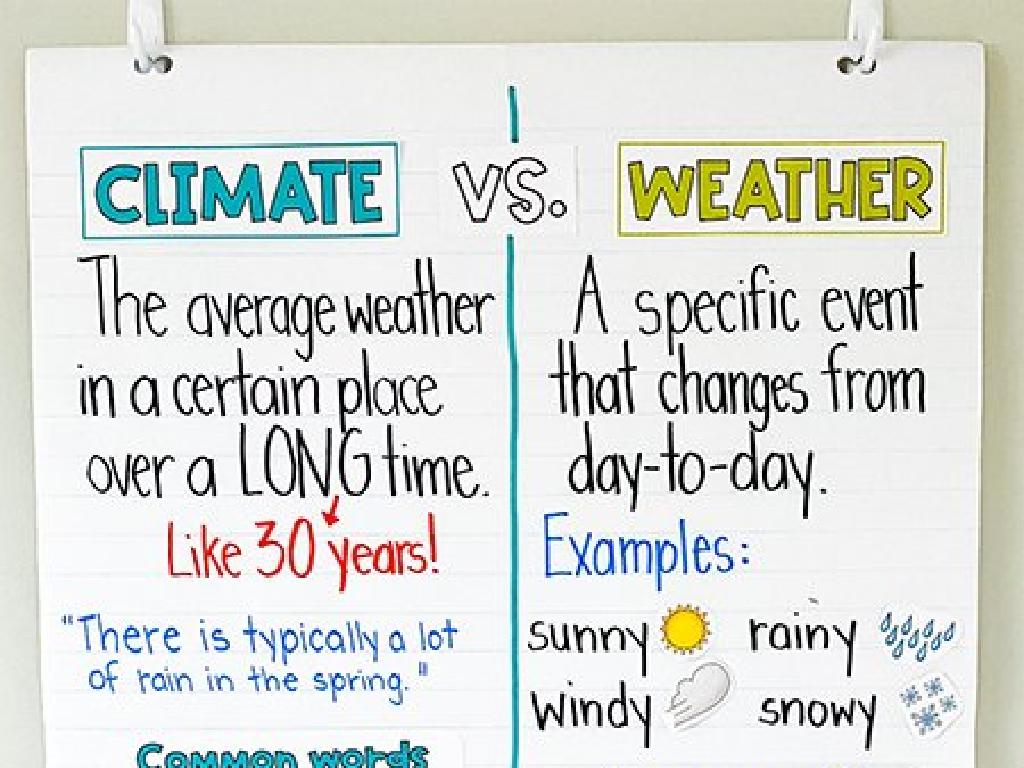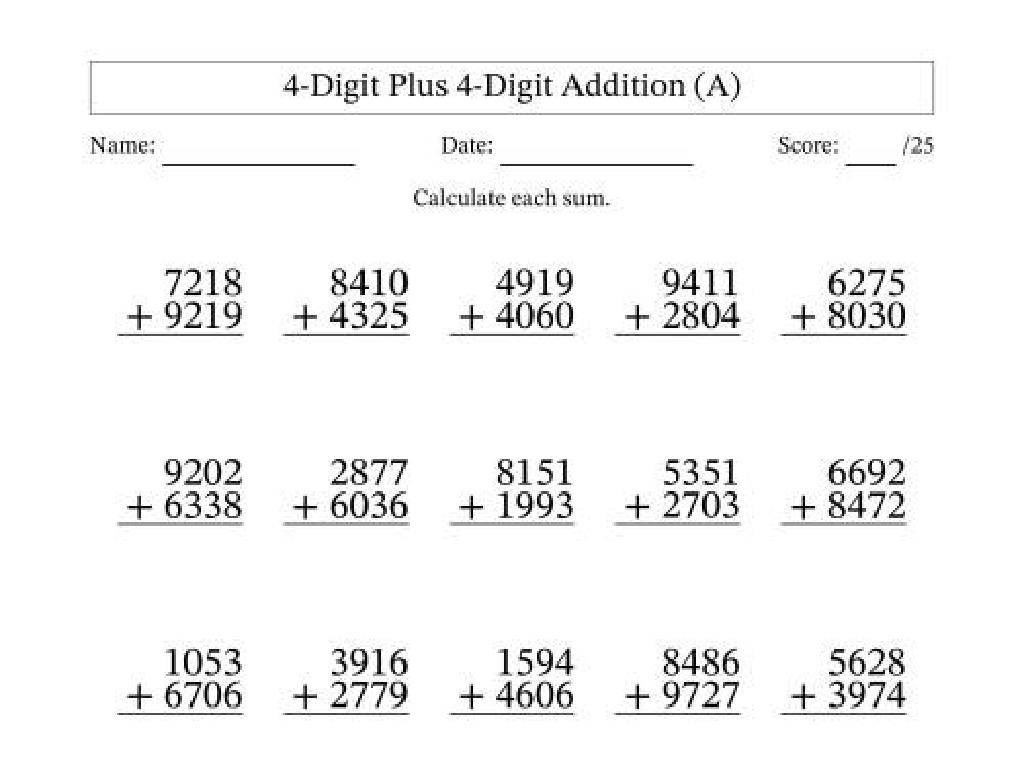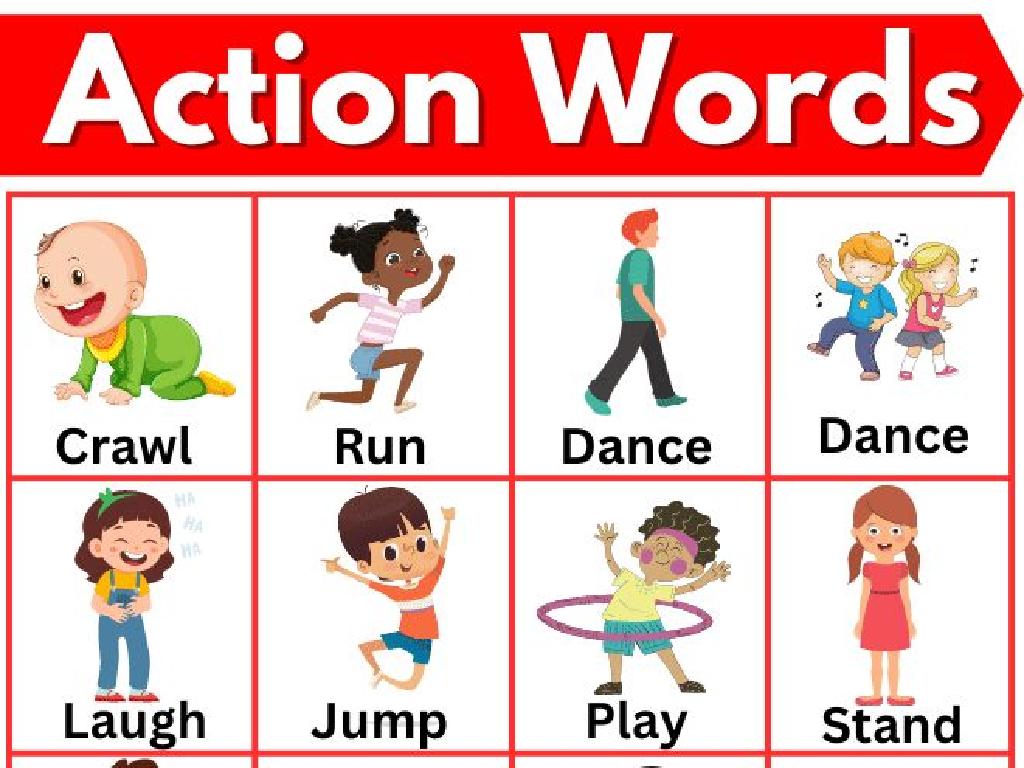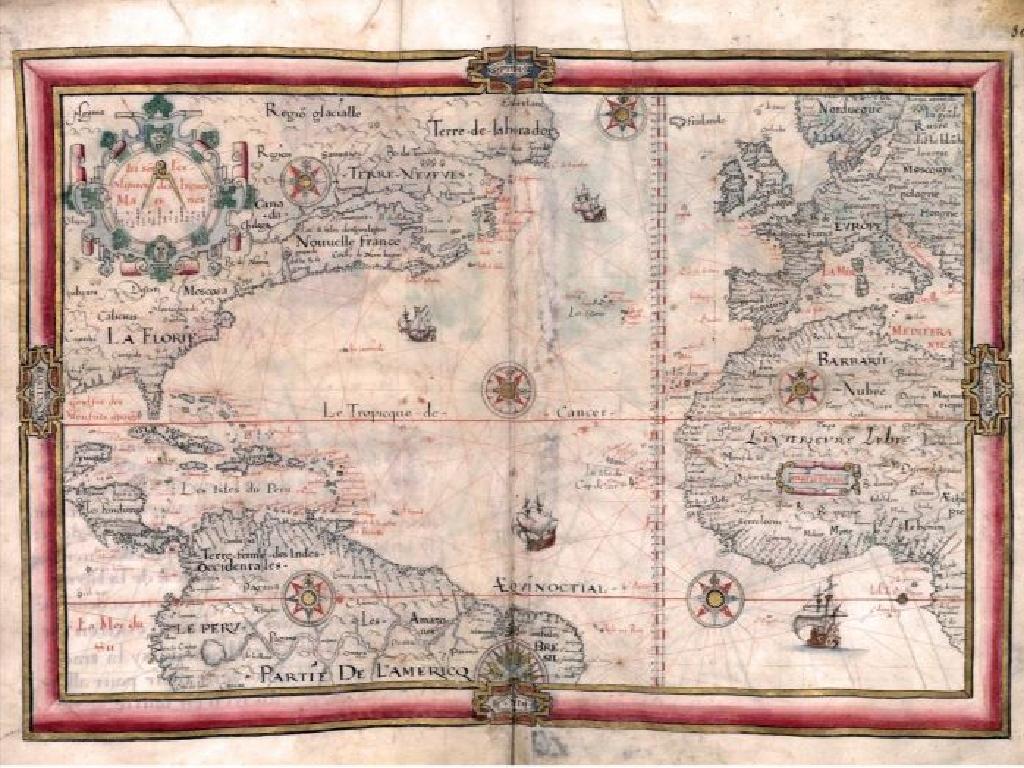Name Countries Of Africa: Region 2
Subject: Social studies
Grade: Eighth grade
Topic: Africa: Geography
Please LOG IN to download the presentation. Access is available to registered users only.
View More Content
Exploring Africa: Geography – Region 2
– Africa’s diverse geography
– Africa is not a monolith; it has deserts, mountains, and forests.
– What are ‘regions’?
– ‘Regions’ help us study areas with similar characteristics.
– Countries in Africa’s Region 2
– Region 2 includes countries like Nigeria, Niger, and Chad.
– Significance of regional study
– Understanding regions helps us appreciate cultural and environmental diversity.
|
This slide introduces students to the diverse geography of Africa and the concept of regions, which are areas that share common characteristics. Today’s lesson focuses on Region 2, which includes a variety of countries with distinct features and cultures. Highlight the importance of studying Africa by regions to understand the continent’s complexity and diversity. Encourage students to think about how geography can influence culture and daily life. Provide a map for visual reference and ask students to locate Region 2 and its countries. Discuss the significance of regional study in understanding the broader picture of Africa’s geography.
Exploring Africa: Region 2
– Defining Region 2
– Region 2 refers to a specific area in Africa, often categorized for study or governance.
– Countries within Region 2
– Includes nations like Angola, Zambia, and Malawi among others.
– Geographical features
– Known for diverse landscapes: savannas, plateaus, and major rivers like the Zambezi.
– Significance of Region 2
– Understanding Region 2 is crucial for grasping Africa’s cultural and ecological diversity.
|
This slide introduces students to Region 2 of Africa, a term that may refer to a grouping of countries for the purpose of study. It’s important to clarify that ‘Region 2′ isn’t a universally recognized or official designation but rather a convenient way to study the continent’s geography. Highlight the countries that are part of this region, such as Angola, Zambia, and Malawi, and discuss their unique geographical features, including savannas, plateaus, and significant rivers like the Zambezi. Emphasize the importance of understanding the region’s geography to appreciate the continent’s rich cultural and ecological diversity. Encourage students to explore these countries’ locations on a map and consider how geography influences lifestyle and culture.
Exploring Africa: Countries of Region 2
– List Region 2 countries
– Examples: Nigeria, Niger, Chad
– Capitals of these countries
– Abuja, Niamey, N’Djamena
– Cultural insights of Region 2
– Rich traditions, diverse ethnic groups
– Languages spoken in Region 2
– Predominant languages include Hausa, French, Arabic
|
This slide aims to familiarize students with the countries of Africa’s Region 2, their capital cities, and a glimpse into the region’s cultural and linguistic diversity. Start by presenting the list of countries, ensuring students can identify them on a map. Discuss the capital cities, which can be a gateway to understanding the political geography of the region. Highlight the rich cultural heritage, mentioning traditional music, art, and social customs. Emphasize the linguistic diversity, noting that many countries are multilingual with languages like Hausa, French, and Arabic being widely spoken. Encourage students to research more about one country’s culture and language as a class project.
Exploring Region 2 of Africa: Physical Geography
– Major landforms of Region 2
– Includes mountains, valleys, and plateaus
– Rivers and lakes in Region 2
– Nile River, Lake Victoria among others
– Climate zones of Region 2
– Ranges from arid deserts to tropical zones
|
This slide aims to provide an overview of the physical geography of Africa’s Region 2. Students should understand the diversity of landforms present in this area, which includes significant features such as mountains, valleys, and plateaus. Highlight the importance of the Nile River and Lake Victoria, which are crucial to the region’s ecosystem and human activities. Discuss the various climate zones, from dry, arid deserts to wet, tropical areas, and how these climates affect the life and culture of the people living there. Encourage students to research specific characteristics of each landform, river, lake, and climate zone to gain a deeper understanding of Region 2’s geography.
Economic Activities in Africa: Region 2
– Agriculture: Crops and practices
– Staple crops like maize; use of both subsistence and commercial farming methods.
– Industry: Dominant sectors
– Textiles, mining, and manufacturing are prevalent industries.
– Trade: Exports and imports
– Exports include agricultural products, textiles; imports are machinery, consumer goods.
– Impact on regional economy
|
This slide aims to provide an overview of the economic activities in Africa’s Region 2. Emphasize the importance of agriculture, highlighting the main crops such as maize and the mix of farming practices from small-scale subsistence to larger commercial operations. Discuss the key industries, including textiles, mining, and manufacturing, and how they contribute to the economy. Explore the trade dynamics by examining the major exports, which often consist of the region’s agricultural produce and textiles, and the imports, including machinery and consumer goods. Highlight the interplay between these economic activities and their combined impact on the region’s economy. Encourage students to think about how these economic factors influence daily life and future development in the region.
Cultural Highlights of Africa: Region 2
– Explore traditional attire and art
– Each country has unique clothing styles, like the Kente cloth of Ghana.
– Delve into music and dance forms
– African music is rhythmic; dances often tell stories or celebrate events.
– Discover regional festivals
– Festivals like Mali’s Festival au Desert showcase music and culture.
– Celebrate diverse celebrations
– Celebrations vary, from religious ceremonies to independence days.
|
This slide aims to give students a glimpse into the rich cultural tapestry of Africa’s Region 2. Highlight the unique traditional clothing and art that represent the identity and history of each country. Discuss the significance of music and dance in daily life and communal gatherings, emphasizing their role in storytelling and celebration. Introduce students to various regional festivals, which are vibrant expressions of local heritage and often attract international attention. Lastly, discuss the different types of celebrations, including religious ceremonies and national holidays, to illustrate the diversity within the region. Encourage students to research more about the cultural aspects that interest them and be prepared to discuss their findings.
Challenges in Africa: Region 2
– Environmental issues impact
– Desertification, deforestation, and water scarcity
– Economic challenges faced
– Poverty, unemployment, and infrastructure deficits
– Political instability concerns
– Frequent changes in government and civil unrest
– Social issues and development
– Education access, healthcare, and gender inequality
|
This slide aims to highlight the key challenges faced by countries in Africa’s Region 2. Environmental issues include the spread of deserts, loss of forests, and limited access to clean water. Economic challenges are marked by high poverty rates, lack of job opportunities, and inadequate infrastructure. Politically, many countries in this region experience instability and governance issues, which can lead to civil unrest. Socially, there are significant hurdles in improving education, providing sufficient healthcare, and ensuring equality for all genders. It’s crucial to discuss these challenges to understand the complexities of development in this region and to foster a discussion on potential solutions among students.
Class Activity: Mapping Africa’s Region 2
– Receive a blank map of Region 2
– Label countries and capitals
– Mark major geographical features
– Include rivers, mountains, and deserts
– Present your map to the class
|
This activity is designed to help students learn about the countries in Africa’s Region 2 through an interactive mapping exercise. Provide each student with a blank map and a list of countries and capitals to label. Encourage them to also mark significant geographical features such as the Nile River, the Sahara Desert, or Mount Kilimanjaro. This will help them understand the physical landscape and political boundaries of the region. After completing their maps, students will present them to the class, explaining their findings and sharing any interesting facts they learned. This will reinforce their knowledge and improve their public speaking skills. Possible variations of the activity could include working in pairs, creating a digital map, or researching additional facts about each country to share during presentations.

